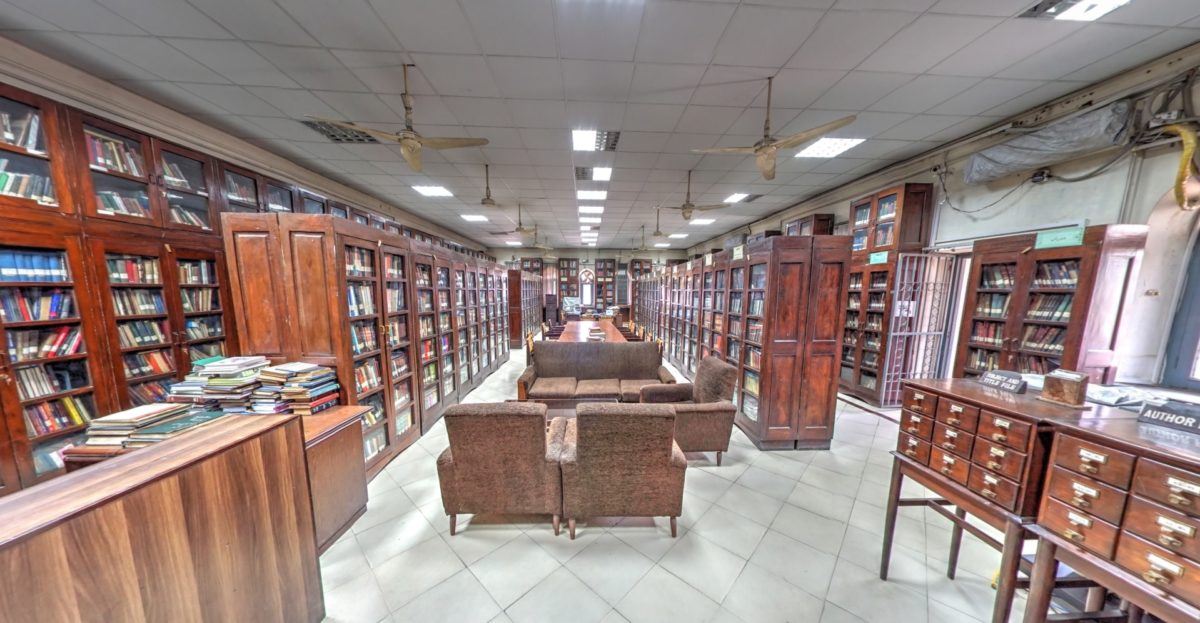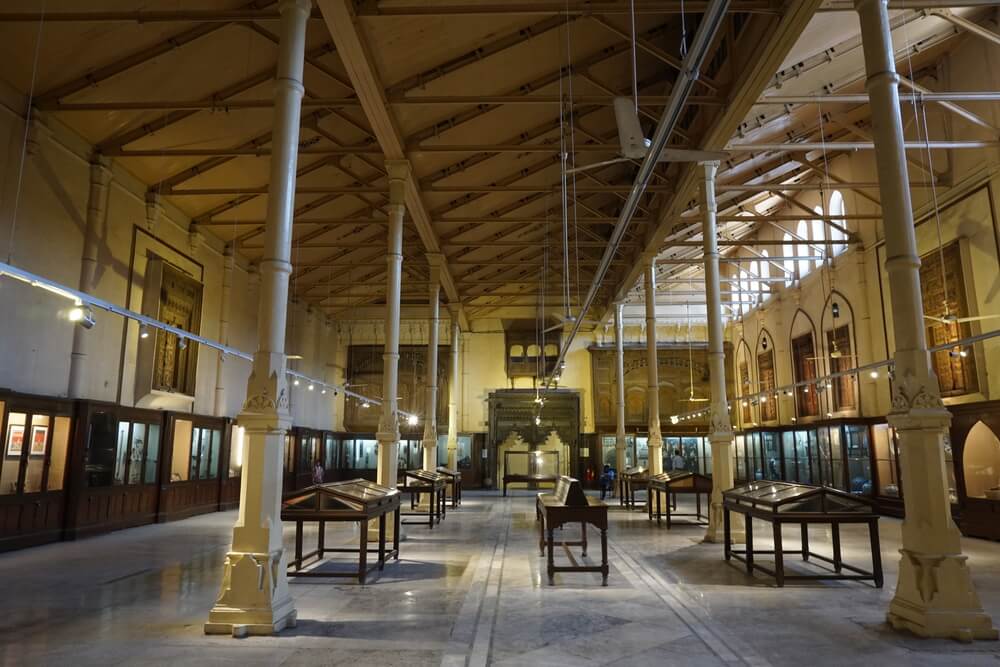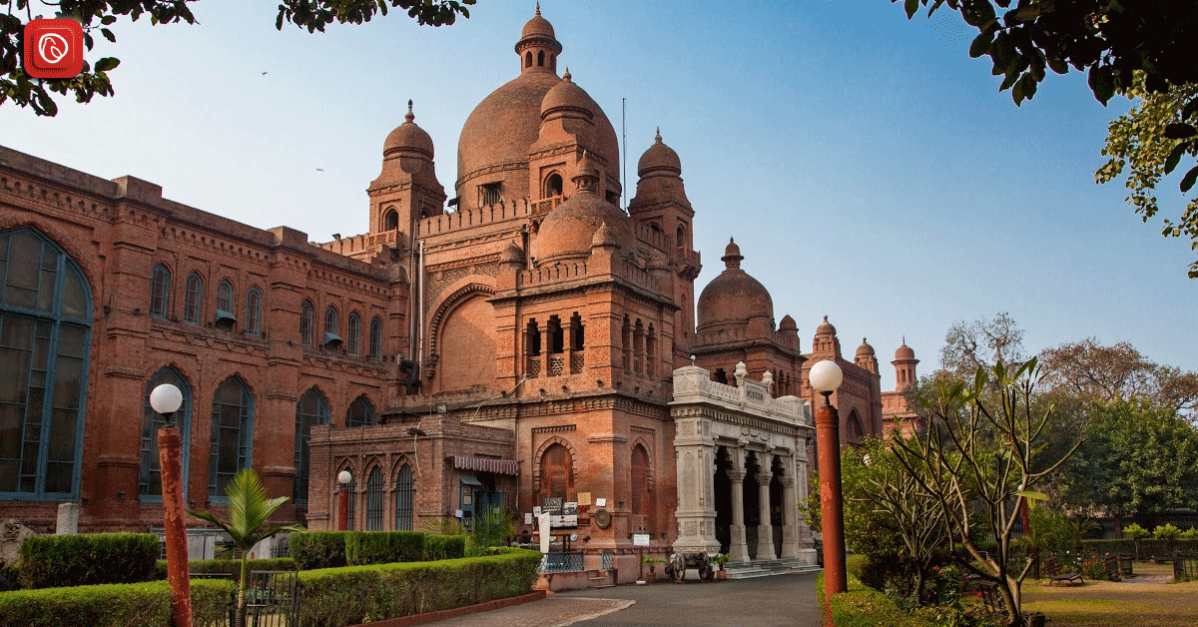The Lahore Museum, situated in the heart of the city, is a beacon of Pakistan’s rich history and heritage. Established in 1894 during the British era, it houses a vast collection of artifacts ranging from the illustrious Mughal period to other significant epochs, offering visitors a glimpse into the region’s diverse civilizations.
The museum’s architecture, blending Mughal and British influences, stands as a testament to Lahore’s historical transitions. With its curated exhibits, the Lahore Museum remains a pivotal institution, preserving and showcasing Pakistan’s cultural legacy for both locals and international visitors.
Graana.com has compiled a detailed blog about Lahore Museum, highlighting its history, galleries, collections, and facilities available.
Collections in Lahore Museum
The Lahore Museum, a treasure trove of historical artifacts and cultural gems, boasts an impressive array of collections that span various epochs and civilizations. Each collection is meticulously curated, offering visitors a deep dive into the rich history and cultural evolution of the region. From ancient relics that date back thousands of years to intricate artworks that reflect the artistic prowess of bygone eras, the museum’s collections serve as a testament to Pakistan’s diverse heritage.
Notable Collections
- Ancient Coins and Numismatics: A vast assortment of coins from different periods, reflecting the economic and political landscapes of their respective times.
- Gandhara Art: A collection that showcases the unique blend of Greco-Buddhist art, prevalent during the Gandhara civilization.
- Islamic Art and Calligraphy: A mesmerizing display of Islamic artistry, featuring intricate calligraphy, pottery, and textiles that depict religious and cultural motifs.
- Miniature Paintings: Exquisite miniature paintings that narrate stories of love, valor, and mythology, representing the pinnacle of South Asian artistic traditions.
- Ethnological Artifacts: A collection that sheds light on the diverse ethnicities and tribes of Pakistan, featuring traditional attire, jewelry, and everyday objects.
- Prehistoric and Indus Valley Civilization: Artifacts and tools from the ancient Indus Valley Civilization, providing insights into early human settlements and advancements.
- Sikh Gallery: A dedicated space that chronicles the Sikh period in Lahore, showcasing artifacts, manuscripts, and relics from this significant era.
Other Notable Collections
- Textile and Carpets: A stunning collection of textiles and carpets that highlight the intricate craftsmanship and artistic techniques prevalent in the region.
- Arms and Armor: A display of weaponry and protective gear from various historical periods, offering a glimpse into the military history of the region.
- Natural History: A section dedicated to the flora and fauna of the region, featuring taxidermy specimens and geological artifacts.
- Mughal Paintings: A collection that celebrates the grandeur of the Mughal Empire through exquisite paintings, portraits, and manuscripts.
- Stone Age Tools: Artifacts that represent the earliest human civilizations, showcasing tools and implements from the Stone Age era.
- Contemporary Art: A modern collection that features artworks from renowned Pakistani artists, reflecting the contemporary art scene and its evolution.
Each collection in the Lahore Museum is a testament to the region’s vibrant history, cultural diversity, and artistic excellence. Through these artifacts and exhibits, visitors can embark on a captivating journey, exploring the rich tapestry of civilizations that have shaped the landscape of South Asia.
Lahore Museum Library

The Lahore Museum Library stands as a beacon of knowledge and a repository of invaluable resources, intricately woven into the fabric of Pakistan’s cultural and historical landscape. It is among one of most popular libararies of Lahore.
Established in 1894, this esteemed institution has grown exponentially over the years, evolving into a comprehensive research and reference center that attracts scholars, researchers, and history enthusiasts from around the globe.
Rich Archive of Literature
The library boasts an expansive collection of books, periodicals, pamphlets, reports, and articles, meticulously curated to cater to a diverse range of subjects pertinent to the South Asian region. Its shelves are adorned with rare manuscripts, historical texts, and specialized publications that offer unparalleled insights into art, culture, civilization, archaeology, anthropology, and more.
From the seminal works like “Textile Fabrics of India” by Watson and “Encyclopedia Britannica” from 1882 to periodicals like “The Journal of Indian Art,” the library’s collection is a testament to its dedication to preserving and disseminating knowledge.
Services and Facilities

Beyond its vast collection, the Lahore Museum Library offers a plethora of services and facilities designed to facilitate academic research and intellectual exploration. Research and reference guidance are provided to scholars and students alike, ensuring that they navigate the extensive archives with ease and precision.
The library is equipped with modern amenities such as photocopying, printing, scanning facilities, and high-speed internet access, fostering a conducive environment for scholarly pursuits.
Membership and Accessibility
The library extends its services to a broad spectrum of individuals, from esteemed members of the Lahore Museum to students and researchers specializing in various disciplines of social sciences. Membership categories range from lending services for museum officials to general membership options for researchers and students.
With flexible membership fees and access to millions of e-books and documentaries through platforms like “Curiosity Stream,” the library endeavors to promote academic excellence and facilitate comprehensive research endeavors.
Facilities at Lahore Museum
The Lahore Museum is a cornerstone of cultural heritage in Pakistan, offering facilities to enhance visitor experiences, support academic endeavors, and promote cultural enrichment. Located in the heart of Lahore, this iconic institution harmoniously combines architectural elegance with contemporary amenities, fostering an environment conducive to learning, exploration, and a deep appreciation of Pakistan’s rich heritage.
State-of-the-Art Auditorium

One of the standout facilities at the Lahore Museum is its air-conditioned auditorium, equipped with more than two hundred seats, a stage, and a state-of-the-art sound system.
This multipurpose venue serves as a hub for cultural events, workshops, lectures, and seminars. It provides a platform for artists, scholars, and cultural enthusiasts to convene, collaborate, and celebrate Pakistan’s diverse cultural tapestry. Individuals and organizations can rent the auditorium for various functions.
Kim’s Book Shop
For those inclined towards literary exploration, Kim’s Book Shop, established in 1968, stands as a literary oasis within the Lahore Museum premises. This renowned bookshop offers a curated selection of books spanning diverse genres, including the history of Lahore, art, culture, Islamic art and architecture, textiles, carpets, and travel guides.
Additionally, visitors can purchase postcards, maps, and other memorabilia, making it a perfect destination for souvenir hunting and intellectual indulgence.
Curio Shop

The Lahore Museum’s Curio Shop beckons art aficionados and souvenir hunters alike with its eclectic array of decorative art, craft objects, ethnic jewelry, and embroidered specimens. This boutique store showcases meticulously crafted artifacts and memorabilia that reflect Pakistan’s vibrant cultural heritage. It offers visitors an opportunity to take home a tangible piece of history.
Research & Reference Library
The Lahore Museum is also home to the Lahore Museum Research & Reference Library (LMRRL), established in 1894. This invaluable resource center houses a rich archive of books, periodicals, manuscripts, and reports, focusing on subjects such as museology, archaeology, history, art, and culture. With services ranging from research and reference guidance to photocopying and printing facilities, the library serves as a cornerstone for academic research and intellectual exploration.
Additional Amenities
Beyond these primary facilities, the Lahore Museum boasts a range of amenities designed to enhance visitor comfort and accessibility. These include:
- Webinar Facilities: Equipped to host virtual events, seminars, and online lectures.
- Ambience Environment: A serene and well-maintained environment with AC inverters for optimal comfort.
- Reading Facilities: Comfortable seating arrangements with sofas, enabling visitors to immerse themselves in literary and historical treasures.
- Digital Resources: Access to millions of e-books, documentaries, and research materials through platforms like “Curiosity Stream” and Calibre Software.
Lahore Museum Tours

Lahore Museum tours provide visitors with a comprehensive look into the region’s rich history and cultural heritage. These guided experiences offer a structured yet engaging way to explore the museum’s extensive collections. It allows guests to discover significant artifacts and artworks. Whether you’re a history buff or simply curious about South Asia’s past, Lahore Museum tours offer an informative and enjoyable journey through time.
Lahore Museum Timings
To accommodate both local visitors and international tourists, the Lahore Museum operates on specific timings throughout the week. Lahore Museum Timings:
- Saturday to Thursday: 09:00 a.m. to 05:00 p.m.
- Weekly Holiday: Friday (Closed)
Guided Tours to Lahore Museum

To enrich your museum experience, guided tours are available for individuals, groups, and educational institutions. Knowledgeable guides adeptly navigate visitors through the museum’s extensive collections, offering invaluable insights, historical context, and intriguing anecdotes along the way. These guided tours cater to diverse interests, whether you’re keen on exploring archaeological treasures, artistic masterpieces, or cultural artifacts.
Self-Guided Exploration
For those who prefer a more independent and personalized experience, self-guided tours are also a viable option. Equipped with informative brochures, maps, and audio guides, visitors can traverse the museum at their own pace, pausing to admire exhibits, read descriptions, and immerse themselves in the captivating narratives woven into each artifact.
Special Exhibitions and Events
The Lahore Museum periodically hosts special exhibitions, workshops, and events that delve into specific themes, periods, or artistic genres. These curated experiences offer a unique chance to engage with scholars, artists, and historians, promoting a dynamic environment for learning, dialogue, and cultural exchange.
Lahore Museum Galleries
The Lahore Museum Galleries stand as a testament to the rich tapestry of history, art, and culture of South Asia. Each gallery offers a unique exploration, showcasing artifacts and artworks that span centuries, civilizations, and themes. The following are some galleries housed within the Lahore Museum, each offering a unique perspective on the rich history, art, and culture of South Asia.
General Gallery
The General Gallery serves as a multifaceted exhibition space, housing artifacts donated to the Lahore Museum from various private collections. This gallery encapsulates a wide array of items, including manuscripts, metal and glassware, potsherds, coins, medals, and miscellaneous objects that span different epochs and civilizations.
By showcasing objects from diverse origins and periods, the General Gallery offers visitors a comprehensive understanding of cultural exchange, artistic evolution, and historical narratives. The gallery’s eclectic collection underscores the interconnectedness of civilizations and the significance of material culture in documenting human history.
Contemporary Paintings Gallery
The Contemporary Paintings Gallery is a vibrant testament to Pakistan’s dynamic art scene, featuring masterpieces by seminal artists from pre-Partition to contemporary times. The gallery houses works that encapsulate various artistic movements, styles, and themes, reflecting Pakistan’s cultural milieu.
By highlighting Pakistan’s artistic evolution, the Contemporary Paintings Gallery underscores the nation’s cultural vitality, artistic innovation, and creative expression. The gallery serves as a platform for artists, educators, and enthusiasts to engage with, appreciate, and study Pakistan’s rich artistic heritage.
Miniature Paintings Gallery
The Miniature Paintings Gallery is a treasure trove of exquisite artworks spanning the 16th to 20th centuries. The gallery features folios from Jain manuscripts, paintings from Persian, Mughal, Rajput, and Pahari schools, and Sikh portraiture, showcasing intricate details, vibrant colors, and diverse themes.
As a repository of miniature paintings, this gallery provides insights into South Asia’s artistic traditions, cultural exchanges, and aesthetic sensibilities. The artworks encapsulate historical events, religious narratives, and social realities, offering viewers a nuanced understanding of the region’s multifaceted heritage.
Pakistan Movement Gallery
The Pakistan Movement Gallery is a chronological narrative of pivotal moments, figures, and events from 1799 to 1947. Through photographs, documents, and artifacts, the gallery chronicles the struggle for a Muslim majority homeland, highlighting key milestones, leaders, and movements.
By documenting the Pakistan Movement’s trajectory, this gallery illuminates the nation’s foundational ethos, political struggles, and socio-cultural dynamics. The gallery’s exhibits honor the sacrifices, vision, and resilience of individuals and communities who shaped Pakistan’s destiny.
Postage & Stamps Gallery

The Postage & Stamps Gallery commemorates Pakistan’s postal history since 1947, featuring a diverse collection of stamps, designs, and thematic representations. The gallery showcases the evolution of stamp printing techniques, designs, and cultural motifs.
By tracing Pakistan’s postal heritage, this gallery offers insights into the nation’s socio-cultural, political, and technological evolution. The exhibits reflect Pakistan’s national identity, historical milestones, and artistic expressions through postage stamps, serving as a window into the country’s past and present.
Manuscripts Gallery
The Manuscripts Gallery is a sanctuary of literary treasures, featuring Quranic, Persian, and miscellaneous manuscripts. The gallery houses diverse subjects such as Hadith, history, geography, literature, and calligraphy, showcasing the region’s intellectual, religious, and cultural legacy.
As a repository of manuscripts, this gallery preserves and presents South Asia’s intellectual heritage, literary traditions, and linguistic diversity. The exhibits offer scholars, researchers, and enthusiasts an invaluable resource for studying, interpreting, and appreciating the region’s literary and cultural accomplishments.
Coins Gallery
The Coins Gallery is a numismatic paradise, housing one of the largest collections in the Indian subcontinent, comprising 40,000 pieces. The gallery features coins from various ruling families, dynasties, and periods, reflecting political, economic, and cultural histories.
By showcasing coins from diverse periods and regions, this gallery provides insights into trade routes, economic systems, and political landscapes. The exhibits offer a tangible connection to past civilizations, rulers, and societies. It is enriching our understanding of monetary systems, cultural exchanges, and historical narratives.
Pre-historic and Indus Gallery

The Pre-historic and Indus Gallery traces human civilization’s evolution through artifacts from the Soan Valley, Mehrgarh, Harappa, and Mohenjodaro. The gallery showcases Stone Age tools, pottery, and cultural artifacts, offering glimpses into ancient societies, lifestyles, and innovations.
By exploring prehistoric and Indus Valley civilizations, this gallery illuminates human evolution, societal structures, and technological advancements. The exhibits provide a holistic view of ancient cultures, economies, and belief systems, fostering appreciation for our shared human heritage.
Hindu, Buddhist, and Jain Gallery
The Hindu, Buddhist, and Jain Gallery celebrates South Asia’s religious and cultural diversity. It is featuring artifacts from the Indian subcontinent, Nepal, Tibet, and Burma. The gallery showcases sculptures, paintings, wood carvings, and artifacts that reflect spiritual traditions, artistic expressions, and cultural practices.
By highlighting Hindu, Buddhist, and Jain traditions, this gallery underscores South Asia’s religious pluralism, artistic excellence, and cultural synthesis. The exhibits offer insights into spiritual philosophies, artistic conventions, and societal norms, fostering interfaith dialogue, cultural appreciation, and historical understanding.
Gandhara Gallery

The Gandhara Gallery focuses on the ancient region of Gandhara, showcasing Mahayana Buddhist sculptures, narratives, reliefs, and statues. The gallery reflects the influence of Greek and local artistic traditions, highlighting artistic innovations, religious narratives, and cultural exchanges.
By exploring Gandhara’s artistic legacy, this gallery illuminates ancient trade routes, cultural exchanges, and artistic syncretism. The exhibits offer a unique blend of Hellenistic and indigenous traditions, fostering appreciation for artistic innovation, religious expression, and historical interconnectedness.
Islamic Gallery
The Islamic Gallery displays objects from the Mughal and Colonial period. It features metalwork, calligraphy, paintings, arms, armor, tiles, and artifacts reflecting Islamic artistic traditions and influences.
By showcasing Islamic art and artifacts, this gallery highlights South Asia’s cultural synthesis, artistic excellence, and religious diversity. The exhibits offer insights into Mughal aesthetics, colonial influences, and Islamic artistic traditions. It fosters appreciation for regional variations, artistic expressions, and historical narratives.
Sikh Gallery
The Sikh Gallery honors the Sikh Empire’s legacy in the Indo-Pak Subcontinent. It featuring artifacts, miniatures, decrees, Holy Quran, documents, and personal belongings of Maharaja Ranjeet Singh and associated personalities.
By exploring the Sikh Empire’s history and legacy, this gallery illuminates political dynamics, cultural interactions, and religious coexistence. The exhibits offer insights into Sikh leadership, governance, and contributions to regional history. It is fostering appreciation for diverse narratives, cultural exchanges, and historical milestones.
Ethnological Gallery

The Ethnological Gallery showcases objects from the Swat region and textiles from regions across the Indian subcontinent. It features fabrics, embroideries, utensils, furniture, and traditional art forms.
By highlighting ethnological artifacts and textiles, this gallery underscores South Asia’s cultural diversity, artistic traditions, and material culture. The exhibits offer insights into regional identities, artistic conventions, and societal norms. It is fostering appreciation for indigenous knowledge, craftsmanship, and cultural heritage.
Other Museums in Lahore
In addition to the renowned Lahore Museum, there are a variety of museums in Lahore that delve into its multifaceted history and cultural tapestry. These establishments offer visitors a deeper understanding of Lahore’s evolution, from its Mughal roots to its colonial past and beyond.
Each museum, with its unique collection and narrative, contributes to painting a comprehensive picture of Lahore’s rich heritage. It makes the city a treasure trove for history enthusiasts and curious minds alike.
Army Museum Lahore
The Army Museum Lahore tells the story of Pakistan’s military past and present. Located near Lahore’s airport, it was started in 2017 by General Bajwa. Inside, visitors can see old uniforms, weapons, and medals from different times in Pakistan’s history. The building itself is impressive, with nice floors and statues. People can learn about key moments like the wars of 1965 and 1971.
There are also sections that honor soldiers who protected places like Siachen Glacier and remember those lost, like during the sad event at the Army Public School in Peshawar. Overall, the museum gives a clear picture of Pakistan’s military journey.
National History Museum in Lahore

The National History Museum in Lahore, inaugurated in 2018, stands as Pakistan’s premier digital museum. It offers visitors a deep dive into the nation’s history from the East India Company era to present-day milestones. Managed by the Parks and Horticulture Authority Lahore and enriched by the “Citizens Archive of Pakistan,” this museum utilizes cutting-edge technology. It includes virtual reality and holograms, to provide an immersive historical experience.
Conclusion
The Lahore Museum is not just a repository of artifacts; it’s a testament to the rich cultural and historical legacy of the region. Through its meticulously curated galleries and comprehensive collections, visitors are offered a journey through time. It unveils stories and narratives that shaped the socio-cultural fabric of South Asia.
Moreover, with its modern facilities and guided tours, the museum bridges the gap between the past and present. It ensures that future generations can continue to immerse themselves in the vibrant history of Lahore and its surrounding regions. This institution remains a beacon of knowledge and exploration, inviting all to delve deeper into the captivating narratives it holds.
For more informative blogs, visit the Graana Blog.




